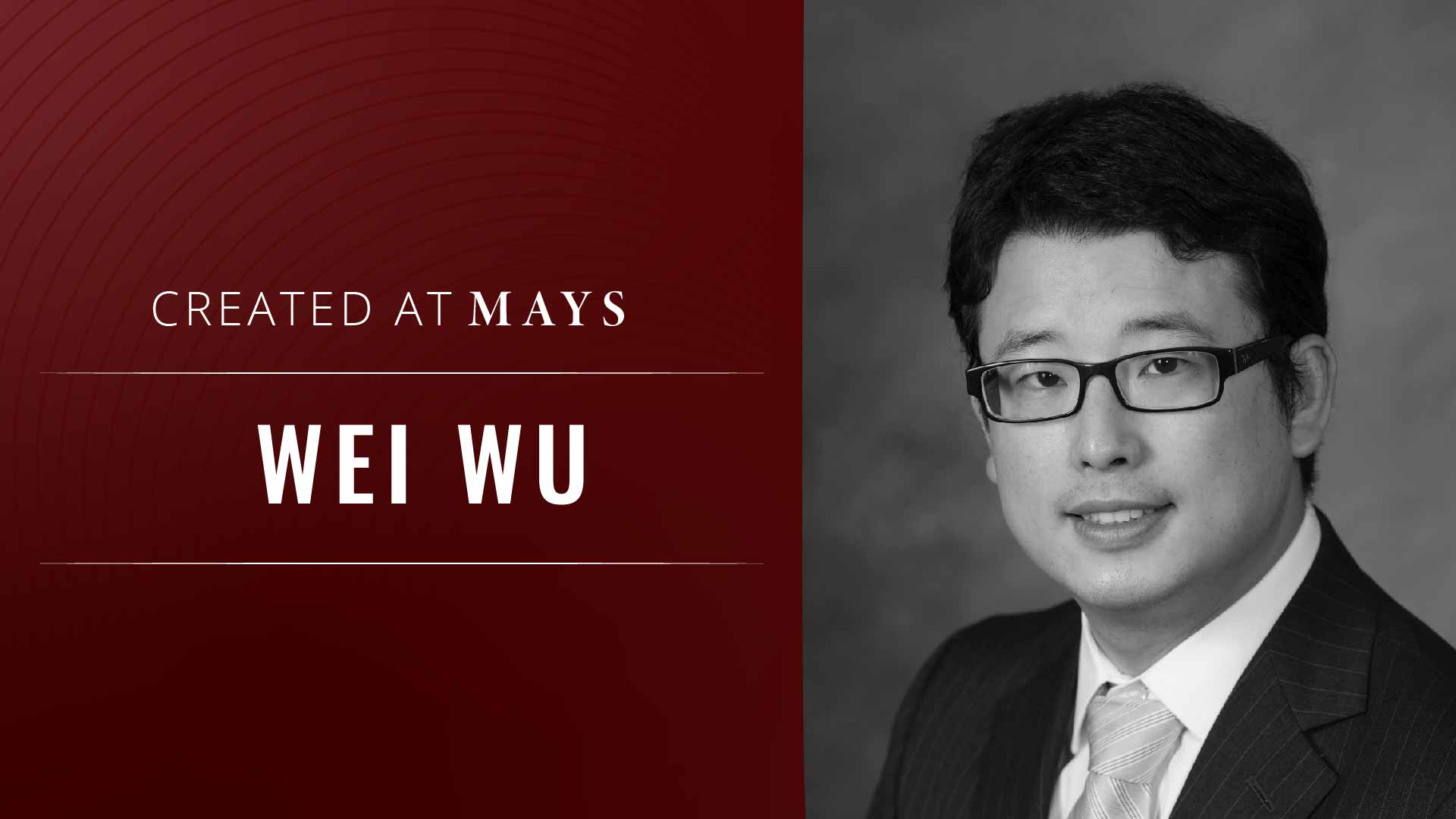Cracking the Code: How Fund Flows Reshape Asset Pricing Dynamics
November 13, 2024
|
Wei Wu
Introduction
The behavior of active equity funds and their impact on financial markets is a critical area of study in finance. A study published in the Journal of Finance by Wei Wu, an associate professor of finance and the John E. Pearson Professorship in Business Administration at Mays Business School, and colleagues explores how common fund flows — specifically the inflows and outflows of active equity funds — affect factor pricing in financial markets. This research provides insights into the “agency friction” that exists between active equity funds and their investors, shedding light on how common fund flows shape stock prices and equilibrium returns.
At the heart of this research lies a profound revelation: active equity funds do not operate in a vacuum. Their decisions are inextricably linked to the ebbs and flows of investor capital, with macroeconomic shocks reverberating through the financial markets, influencing the very fabric of fund flows. This intricate relationship between funds and their investors has far-reaching implications, not only for the funds themselves but also for the broader ecosystem of market participants.
The Flow Hedging Phenomenon
One of the study’s most compelling insights revolves around the concept of “flow hedging,” a strategic behavior exhibited by active equity funds in response to common fund flows. In a bid to mitigate the impact of outflows and preserve fund size, these funds tilt their portfolios towards low-flow-beta stocks, effectively hedging against the potential volatility induced by capital outflows.
This strategic maneuvering, however, is not without consequences. As active funds shift their asset allocations towards low-flow-beta stocks, other market participants — such as household investors and index funds — are left to counterbalance this shift by overweighting high-flow-beta stocks. This dynamic creates an imbalance, leading to a risk premium associated with common fund flows, akin to the principles of the Intertemporal Capital Asset Pricing Model (ICAPM).
A Multi-Factor Model for Asset Pricing
The implications of this research extend beyond the realms of fund management and investment strategy. By introducing a novel intermediary asset pricing mechanism, the study proposes a multi-factor model that accounts for the impact of common fund flows on stock returns. This framework challenges traditional asset pricing models, offering a more comprehensive and nuanced approach to valuing assets in an ever-changing financial landscape.
Imagine a scenario where a sudden economic downturn triggers a wave of fund outflows, prompting active equity funds to rebalance their portfolios towards low-flow-beta stocks. This shift in demand would not only affect the prices of those specific stocks but also ripple through the broader market, influencing the valuations of high-flow-beta stocks and reshaping the risk premiums associated with different asset classes.
Through this lens, the study provides a powerful tool for investors, fund managers, and policymakers alike. By understanding the dynamics of fund flows and their impact on asset pricing, market participants can make more informed decisions, crafting investment strategies that account for liquidity risk and macroeconomic shocks. Policymakers, too, can leverage these insights to anticipate and mitigate potential systemic risks, fostering a more resilient and stable financial system.
Empirical Validation and Quasi-Experiments
To solidify the robustness of their findings, the researchers went beyond theoretical constructs, employing a rigorous empirical approach. By analyzing data from active equity funds and conducting portfolio sorting exercises, they established compelling evidence for the intermediary asset pricing mechanism they proposed.
Moreover, the study leveraged quasi-experiments induced by local natural disasters and unexpected trade war announcements, offering a unique window into how increased outflow risk faced by funds leads to more aggressive flow-hedging portfolio tilts. This innovative methodology not only strengthens the credibility of the findings but also paves the way for future research to explore the intricate interplay between exogenous shocks, fund flows, and asset pricing dynamics.
Follow-up Research on the Compensation of U.S. Fund Managers
To better understand why fund managers have incentives to hedge against flow risk, Wei Wu along with Xiao Cen, an assistant professor of finance at Mays Business School, and their colleagues additionally examined the compensation of fund managers. By developing a unique dataset that covers the compensation and career histories of U.S. fund managers and leveraging administrative data from the U.S. Census Bureau, this study finds that fund flows play a critical role in shaping fund managers’ compensation and career outcomes. This study is partly funded by the Mays Mini Research Grant, an internal grant issued by the Mays Dean’s Office to promote innovative and cutting-edge research.
Reshaping the Future of Finance
As we look to the future of finance, the insights gleaned from this line of research have the potential to reshape the way we perceive and navigate the intricate world of asset pricing. By unveiling the profound influence of fund flows on stock prices and equilibrium returns, this study challenges long-held assumptions and prompts a paradigm shift in our understanding of market dynamics.
Yet, the true value of this line of research extends far beyond academic discourse. It represents a call to action for market participants to embrace a more holistic and nuanced approach to asset valuation and investment strategy. By incorporating the impact of fund flows and agency frictions into their decision-making processes, investors and fund managers can navigate the ever-changing financial landscape with greater precision and foresight.
Research Takeaways
- Common Fund Flows: Active equity funds hedge against common fund flows by tilting their portfolios toward low-flow-beta stocks.
- Risk Premium: Common flows earn a risk premium, leading to a multi-factor asset-pricing model resembling the ICAPM.
- Empirical Evidence: Stocks’ exposures to common fund flows influence active equity funds’ asset allocation decisions and cross-sectional stock returns.
- Practical Implications: The findings inform fund flow hedging, asset pricing models, investment strategies, and market dynamics understanding.




